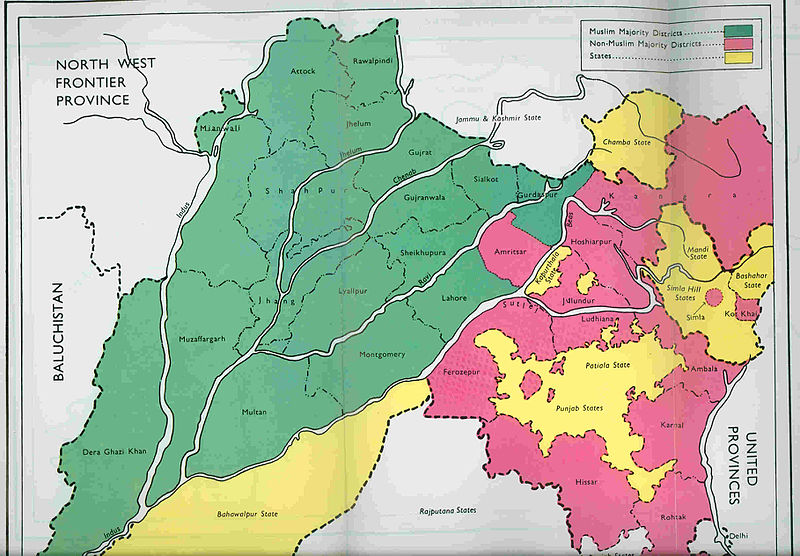In times when religious fanaticism has taken over the secular fabric of the society and polarisation is at its peak, when the nation has come to be defined in homogenised and exclusionary terms by those in power, the cultural and philosophical idea of Punjabiyat assumes great relevance. By disowning the dominant discourse of control lines and nation-states, Punjabiyat embraces the ideas of unity, humanity and a common cultural and historical heritage, thereby subverting the mainstream discourse on nationalism, ‘Indian-ness’ and polarised religious identities. Punjabiyat celebrates the common cultural and literary values that both the Eastern and the Western Punjab continue to share irrespective of the territorial divisions and the trauma of the Partition. The emergence of a Punjabi diaspora in countries like the United Kingdom and Canada has furthered the development and revival of the spirit of Punjabiyat, reclaiming identities that transcend territorial and religious boundaries and that are an outcome of a sustained rootedness to the Punjabi tradition and culture.

In the context of the ongoing farmers’ protests in India, it becomes even more pertinent to reflect upon the very spirit of Punjabiyat that these protests are rooted in and inspired by. A number of historical events and figures have inspired and provided the symbols for the unfaltering resistance of the people. Though Punjabiyat goes beyond religion to embrace humanity as a whole, its very spirit is embedded in the way the Sikh religion itself began as a counter-discourse to the casteism inherent within Hinduism. Resistance to oppression is, therefore, a hallmark of Sikhism in general and Punjabiyat in particular. The Sikh gurus who challenged all forms of religious extremism and were martyred continue to galvanise people across borders to challenge the oppressors. They have also been a fierce source of motivation and determination for the farmers undertaking extended sit-in protests. As the Punjabi poet Professor Puran Singh stated, “Punjab jeenda Guran de naam te.” Punjab thrives in the name of Gurus.
Punjabiyat is therefore a sense of belonging that is inspired by a shared past of political struggles and victories, embedded in historical events and spiritual ideas. The Ghadar Movement initiated by the emigrant Punjabis during the colonial period to overthrow the colonial rule in India is not just a testimony to the spirit of resistance inherent in the idea of Punjabiyat, but it also underscores the role played by diasporic Punjabis in disseminating and expanding the spirit of Punjabiyat.

In present times, the unrelenting support that the farmers’ protests have received from the Punjabi diaspora from different parts of the world is in keeping with the spirit of Punjabiyat – the sense of community and belonging that continues to prevail despite the consolidation of identities based on nationalities and religion.
Punjabi artists from various parts of the world (including the Pakistani Punjab) have come out in support of the farmers of Punjab. Songs such as ‘Ikko Punjab’ (One Punjab) by the Pakistani singer Fareed Khan and ‘Ailaan’ (Proclamation) by Kanwar Grewal from the Indian Punjab invoke the spirit of resistance and create a counter-discourse to that of the state. The idea of there being only one Punjab despite the divisions brought about by the state is an important cultural idea that springs from a sense of shared past, history and cultural heritage. Yet another song by Pakistani singers titled ‘Kan Khol Sun Dilli Sarkar’ (Listen Up, the Government in Delhi) expresses solidarity with Indian farmers and asserts the idea that even though there has been a territorial division, the hearts of Punjabis continue to be connected with a bond that is rooted in a sense of shared culture and community memory. ‘Baaghi Punjab’ (Rebellious Punjab) by Pakistani singer AB Chattha released in solidarity with the farmers of Punjab further resonates with the spirit of Punjabiyat as it invokes revolutionary historical figures from the history – Bhagat Singh, Hari Singh Nalua, Maharaja Ranjit Singh and others epitomise the idea of resistance against oppression and the spirit of not bowing down in the face of oppressive forces.
The ethos of Punjabiyat is therefore encapsulated not only in shared experiences, history and memories of a people but also in popular art, music and literature. The Gurmat and the Sufi traditions of Punjab have played an important role in ensuring that the Punjabi identity does not become a rigid and belligerent one, but remains in a framework that embraces other cultures and traditions as its own. The Adi Granth of Sikhism is a manifestation of this syncretism wherein the teachings of not just Sikh gurus but also of saints like Kabir and Ravidas have been incorporated. The Sufi tradition represented by the ilk of Bulleh Shah, Shah Hussain and Baba Farid continues to emotionally and spiritually connect the Charhda (Eastern Punjab), Lehnda (Western Punjab) as well as the Punjabi diaspora. The soulful musical renditions of Bulleh Shah’s and Baba Farid’s writings by the renowned Pakistani singers Abida Parveen and Nusrat Fateh Ali Khan further reflects that the soul of Punjabiyat is living and thriving across the border in the form of various cultural and literary productions.

Linguistically speaking, the Punjabi language and literature continue to tie the two Punjabs together with a whole movement for the preservation and an appeal for the equal status of the Punjabi language taking place in Pakistani Punjab. The literature produced by the writers of the two Punjabs is a testament to the unifying spirit of the two regions. Amrita Pritam’s lament to Waris Shah on the eve of Partition, evokes a sense of shared culture and trauma represented by the titular figure.
In contemporary times the literary bond between the two Punjabs has been further strengthened in keeping with the idea of Punjabiyat. The establishment of APNA (Academy of the Punjab in North America) in order to promote the Punjabi language, literature and culture can therefore be seen in the light of the idea of Punjabiyat. The publication of the magazine Baramah in Lahore is another step towards finding a common harmony. Punjabi writers from any part of the world are encouraged to contribute to this magazine edited by Amarjit Chandan and Zubair Ahmed. The establishment of the Facebook page ‘Kitab Trinjan’ for chronicling the writings of Punjabi writers from both Eastern and Western Punjab reflects the integral role literature plays in upholding and dilating the concept of Punjabiyat.
Punjabiyat, therefore, is embedded in the language of love, resistance and belonging. It is rooted in the concept of counter-discourse to power and is almost spiritual in nature. Even though there are two, or rather three, Punjabs – Eastern Punjab, Western Punjab and the diasporic Punjab – that together form the Sanjha Punjab (Unified Punjab), one that is based on socio-cultural and emotional association. Hence, it would not be wrong to say that Punjabiyat perceives Punjab as a sun-like whole whose light transcends stringent boundaries and institutionalised hate.
Hunardeep Kaur is a third year student of English Literature at Lady Shri Ram College for Women, University of Delhi. She is interested in looking at the world through the lens of art, literature and culture. She finds solace in poetry and sunsets.


